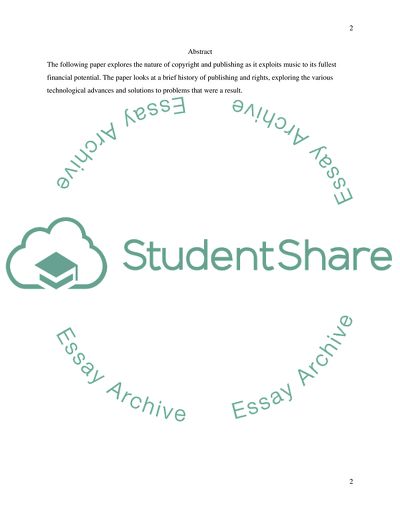Cite this document
(Commonly Used Ways in Which Music Copyrights Have Been Exploited Coursework, n.d.)
Commonly Used Ways in Which Music Copyrights Have Been Exploited Coursework. https://studentshare.org/music/1784598-explain-and-discuss-some-of-the-most-commonly-used-ways-in-which-music-copyrights-have-been-exploited-in-order-to-maximize-the-earning-potential-of-those-copyrights-by-the-uk-music-publishing-industry-over-the-past-50-years
Commonly Used Ways in Which Music Copyrights Have Been Exploited Coursework. https://studentshare.org/music/1784598-explain-and-discuss-some-of-the-most-commonly-used-ways-in-which-music-copyrights-have-been-exploited-in-order-to-maximize-the-earning-potential-of-those-copyrights-by-the-uk-music-publishing-industry-over-the-past-50-years
(Commonly Used Ways in Which Music Copyrights Have Been Exploited Coursework)
Commonly Used Ways in Which Music Copyrights Have Been Exploited Coursework. https://studentshare.org/music/1784598-explain-and-discuss-some-of-the-most-commonly-used-ways-in-which-music-copyrights-have-been-exploited-in-order-to-maximize-the-earning-potential-of-those-copyrights-by-the-uk-music-publishing-industry-over-the-past-50-years.
Commonly Used Ways in Which Music Copyrights Have Been Exploited Coursework. https://studentshare.org/music/1784598-explain-and-discuss-some-of-the-most-commonly-used-ways-in-which-music-copyrights-have-been-exploited-in-order-to-maximize-the-earning-potential-of-those-copyrights-by-the-uk-music-publishing-industry-over-the-past-50-years.
“Commonly Used Ways in Which Music Copyrights Have Been Exploited Coursework”. https://studentshare.org/music/1784598-explain-and-discuss-some-of-the-most-commonly-used-ways-in-which-music-copyrights-have-been-exploited-in-order-to-maximize-the-earning-potential-of-those-copyrights-by-the-uk-music-publishing-industry-over-the-past-50-years.


